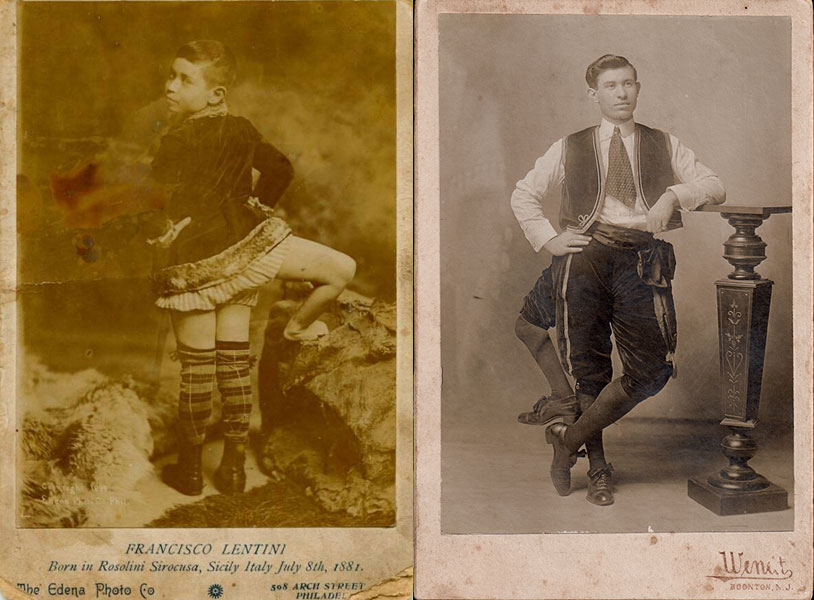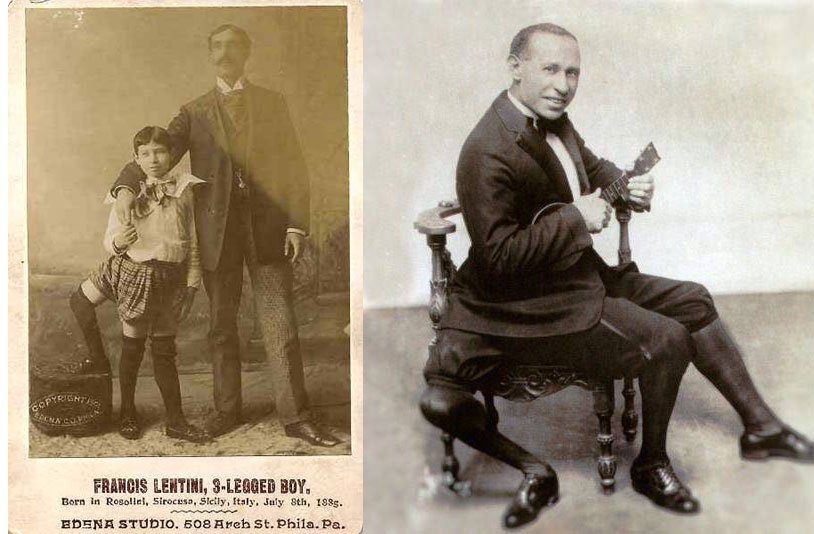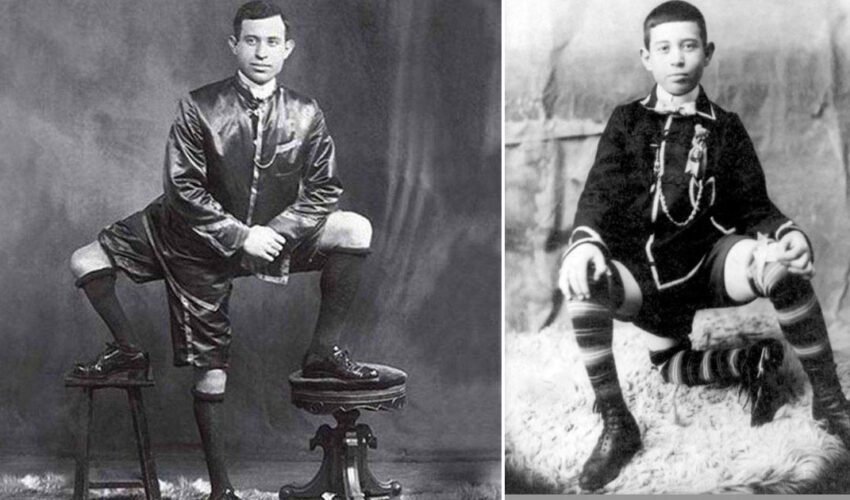On May 18, 1889, a boy was born to farmers Natalae and Giovanna Falco that the world was not prepared for. Frank Lentini was the fifth of a family of twelve children. Frank was born with a parasitic twin, which was attached to his body at the base of his spine and consisted of a pelvic bone, a set of male genitalia, and a gull-sized leg extending from the right side of his hip, with a small foot protruding from its knee.

Life of Frank Lentini
He was initially discarded because of his extra leg, and his parents placed him in the care of his uncle Corrido Falco’s wife. He was four months old when he was playing with other children and was able to straighten his third leg, but couldn’t walk with its assistance.

His aunt enrolled him in a home for disabled children, where he saw children who were far worse off than he was. There were children who couldn’t walk properly, which gave him a new appreciation for life. He learned not only to walk with his extra leg, but also to run, jump rope, ride a bicycle, and even ice skate. He cited his time working with disabled children as his main motivation in the coming years.
Lentini was taken to a specialist at the age of four to have his extra leg amputated, but the risk of paralysis or even death prevented the doctor from performing the standard procedure. In Corsican, he was known as “u maravigghiusu” or “the marvel,” or, more cruelly, “little monster” around his hometown.
Lentini wasn’t ashamed of his third leg, instead, he made a living out of his rare condition of having been born with a parasitic twin. It also earned him the nickname, Three-legged football player, as he used his third leg to kick the football.
As he grew he noticed that his legs weren’t of the same length, one was 39 inches, and the other was 38 inches, the third leg was only 36 inches, and the foot on it was clubbed.
Frank Lentini’s trip to America
The turning point in Lentini’s life came on June 28, 1898, when his father embarked with him on a ship sailing from Liverpool to the United States. He charmed crowds with his keen wit and sense of humor.

The following year, Frank Lentini was already listed as one of the Ringling Bros circus’s attractions. This was one of the most famous of its time, with a freak show that included a fat lady, an albino, a snake charmer, and a tattooed woman in addition to Francesco.
He had unusual control over his extra leg as well, he was known for kicking a football with his extra leg across the stage while performing. Frank Lentini became popular in the 19th century, when abnormalities and disfigurements began to be treated as objects of public interest and amusement at England summer fairs.
Lentini was not only athletic, but also funny and quick-witted. He was known for giving interviews while leaning on his extra limb as a stool. He would have to answer questions about his hobbies or the specifics of his sex life with an extra leg and extra genitalia during the interviews.
For example, when asked if it would be difficult for him to buy shoes in a set of three, Frank replied that he bought two pairs of shoes and gave one to his one-legged friend.
He became a citizen of the United States when he was 30 years old. Over the course of his 40-year career, he worked with every major circus and sideshow, including Barnum & Bailey and Buffalo Bill’s Wild West Show. Lentini was so well-liked by his contemporaries that he was dubbed “The King.”
Love life of Frank Lentini
His glamour did not go unnoticed, as a young lady named Theresa Murray developed feelings for Lentini. The couple married in 1907, and he had four children with her. He was known as “The Three-Legged Sicilian,” “The Only Three-Legged Football Player in the World,” “The Greatest Medical Wonder of All Time,” or simply “The Great Lentini” at the time, and promotional posters depicted him dribbling a football with his third leg.
A year after he married Theresa he returned to his hometown, at the time he became a legendary figure thanks to people who embellished biographies of his life. In the town he was called “maravigghiusu,” the locals wore three-legged trousers to show their fondness for their hero.
The couple had a wonderful life together, but when they divorced in 1935, he began a new life with Helen Shupe, with whom he lived until his death.
“I’ve never complained,” Lentini said in his later years. “I think life is beautiful, and I enjoy living it.” Frank Lentini died rich and happy at the age of 77 of lung failure in 1966.
Now that you’ve read about Frank Lentini read about Robert Wadlow — The Short Life Of The Tallest Man Ever Lived.












Follow Us